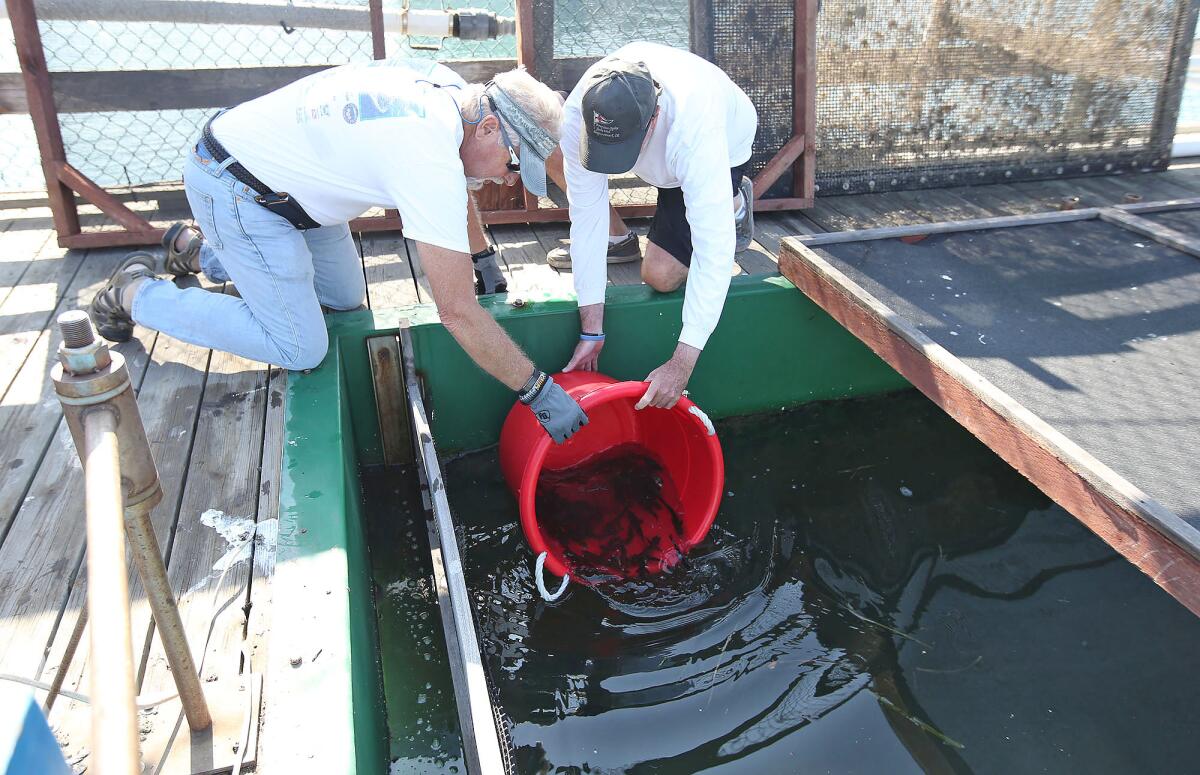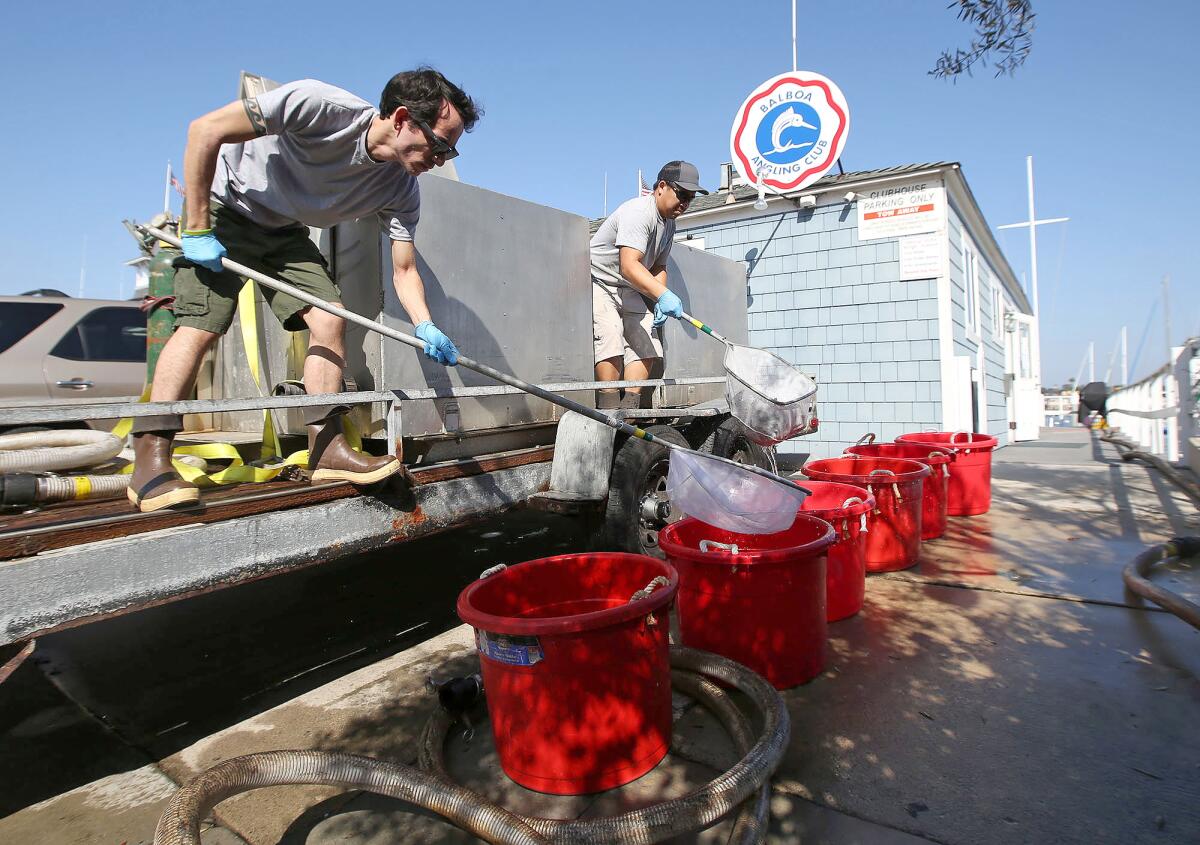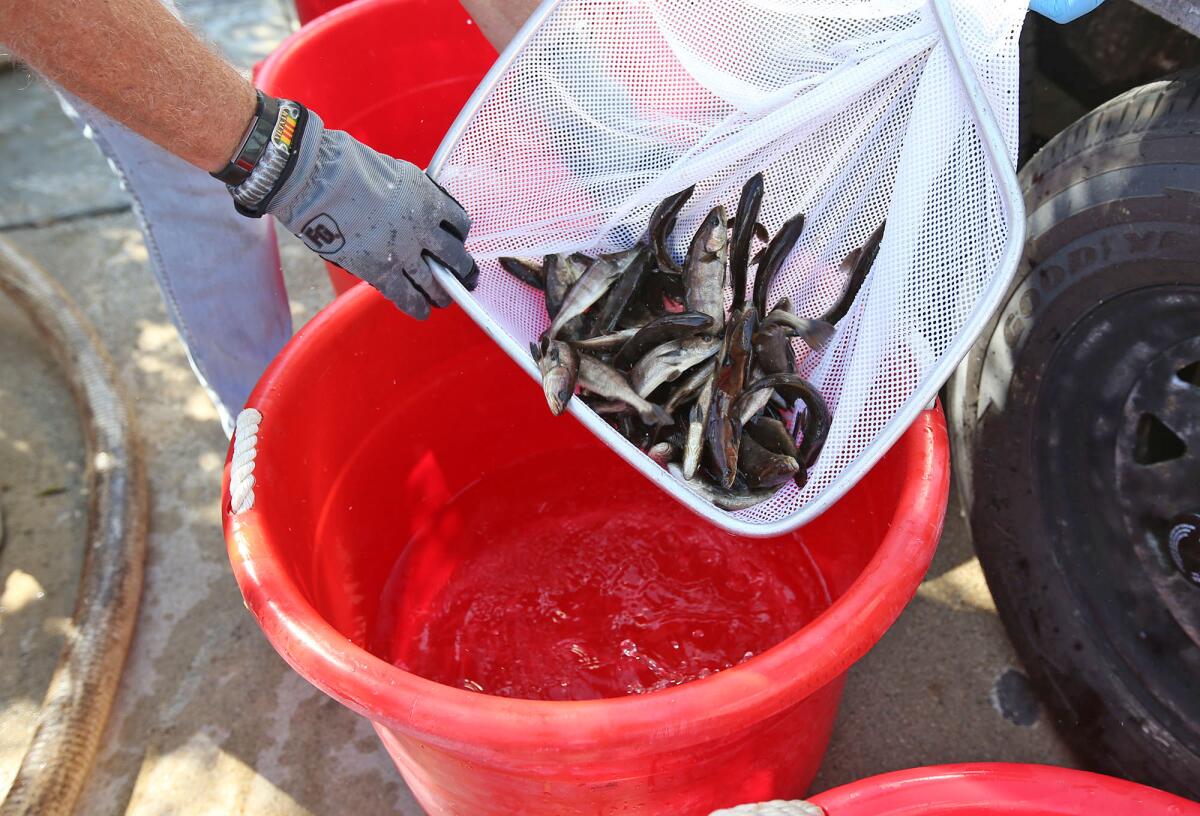Small fish in a big pond: 2,000 young white sea bass help enhance marine population by way of Newport Beach

- Share via
About 2,000 juvenile white sea bass took a road trip Wednesday to Newport Beach.
Employees of the Hubbs-SeaWorld Research Institute transferred the month-old fingerlings from a hatchery pool in Carlsbad into two enclosed, 400-gallon aluminum tanks lashed tightly onto a flatbed trailer for the hour drive north to the Balboa Angling Club’s waterfront clubhouse at Newport Harbor.
From there, they scooped the young fish about 50 at a time into tubs, then carried them down the dock bucket-brigade-style onto a waiting boat bound for nearby grow-out pens where they will mature before being released into the wild.
The fish are part of a longstanding population enhancement program that Hubbs coordinates for the California Department of Fish and Wildlife and achieves with a mix of professional marine biologists and citizen scientists — such as volunteers from the angling club — to bolster a species nearly decimated by overfishing between the 1950s and 1980s.
“You get fed eight times a day,” club volunteer Jim Updike assured a tub of darting, slender, 6-inch-long sea bass ready to be loaded onto a fishing vessel named Fin and Tonic. “No predators.”

The young sea bass in the Hubbs program live in controlled environments in submerged fiberglass pens. In Newport Beach, they’re nestled on a fenced barge not far from the angling club’s headquarters next to the Balboa Pavilion.
The barge holds four 3-foot-deep pens, each about 14 by 6 feet and covered by wood-framed screens to ward off sea gulls. Mesh gates allow water to circulate. A solar panel powers automatic feeders that churn out kibble.

Mitchell Masuda, Hubbs’ grow-out coordinator, is in his fall delivery season, a busy time when he and a technician transport fish to 13 barges between San Diego and Santa Barbara.
On Thursday, Masuda visited Dana Point. On Monday, he plans to be in Marina del Rey. He also will stock pens at Catalina Island, other Channel Islands and San Diego.
Masuda grew up in Salinas and spent a lot of time at nearby Monterey Bay, where he saw salmon boom and bust. As a marine biologist, he has a strong interest in invertebrates, but as a coastal resident he knows the economic and biological value of fish.

Hubbs cultures the juveniles year-round from wild broodstock captured around Catalina. The young specimens have tiny wire tags embedded in their cheeks so researchers can study the sea bass’s movements, diet, growth and especially survival rate. Anglers who catch them in the wild can drop off their frozen heads at several locations, including the Balboa Angling Club’s clubhouse, so they can be scanned for tags.
Volunteers like Updike check water temperature and oxygen saturation, feed the fish by hand to observe their behavior, suction out waste, sediment and marine growth that collect in the pens and record data.
More than 2.4 million white sea bass have been raised and released throughout Southern California since 1986. The Balboa Angling Club has partnered with Hubbs for 26 of those years.
This batch of fish will be released in about six months.
All the latest on Orange County from Orange County.
Get our free TimesOC newsletter.
You may occasionally receive promotional content from the Daily Pilot.




